
Blue Friday Turns Into Blue Saturday
The coast was clear. At least we’re pretty sure the past weekend’s sailing was clear and sunny from Crescent City to San Diego, and everywhere in between on the California coastline. Winter brings its own special character to California sailing. We were determined to sail on “Blue Friday,” but conflicting activities caused us to #optsailing for “Blue Saturday” — we weren’t going to let this Thanksgiving weekend escape without a sail. The Thanksgiving weekend is typically a tribute to the other “sales,” but luckily, here in California, just going for a “sail” is often a fabulous alternative.
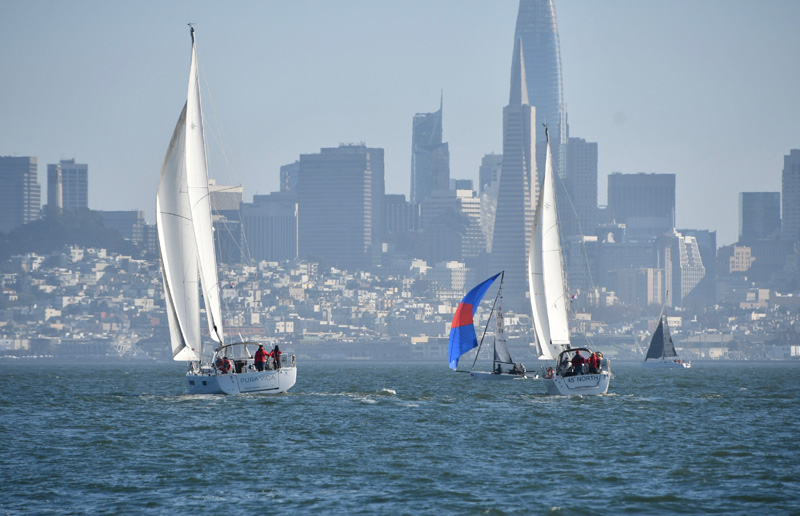
On Saturday we gathered a couple of friends visiting from out of town to join one of only two races held on the Bay over Thanksgiving weekend: the Corinthian Yacht Club’s Saturday pursuit race. The other race was Berkeley Yacht Club’s ritual Sunday Chowder Series. And, like all four days of Thanksgiving weekend, it was sunny, warm and beautiful. Corinthian lured out 19 boats by proposing a “lazy” pursuit race for family and friends, which is pretty much what happened.
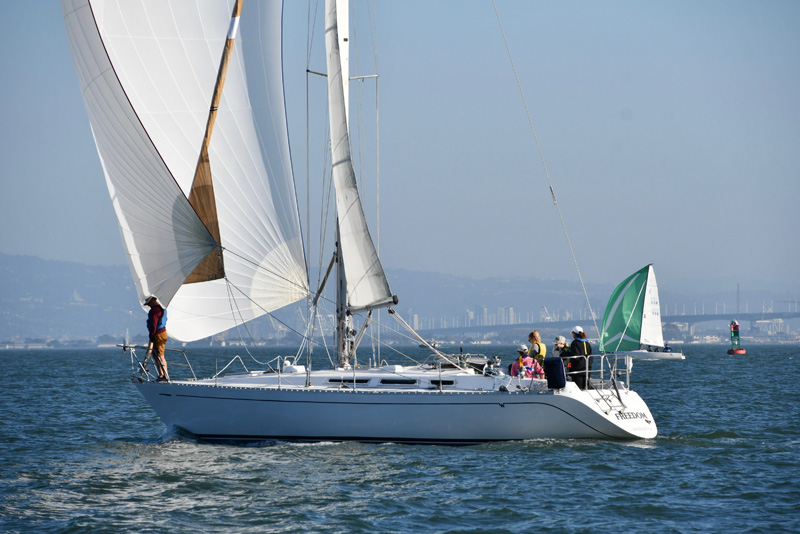
There was an exceptionally high tide, which we noted on our way to the docks; water was backing up into the street through the downtown storm drains. That means when the tide starts to run out, the current will be strong, so the wind had better be strong also. With assigned start times in the pursuit race there was not going to be a postponement, so we were starting at 13:03:09, wind or no wind. Fortunately, a reasonably solid afternoon breeze of 6-12 knots filled in and stuck around long enough for everyone to overcome that building ebb.
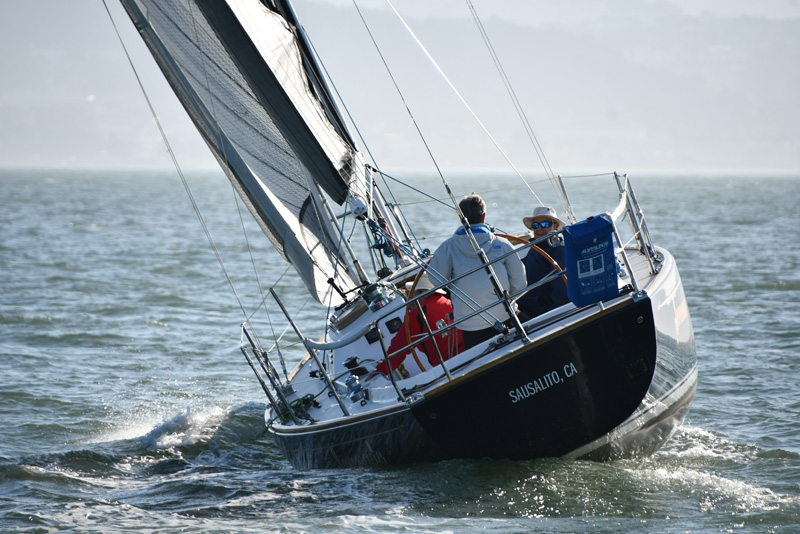
Overall, the Bay remained remarkably empty for such a beautiful day. We think one of the few places you could have easily found parking this past weekend was your marina’s parking lot.
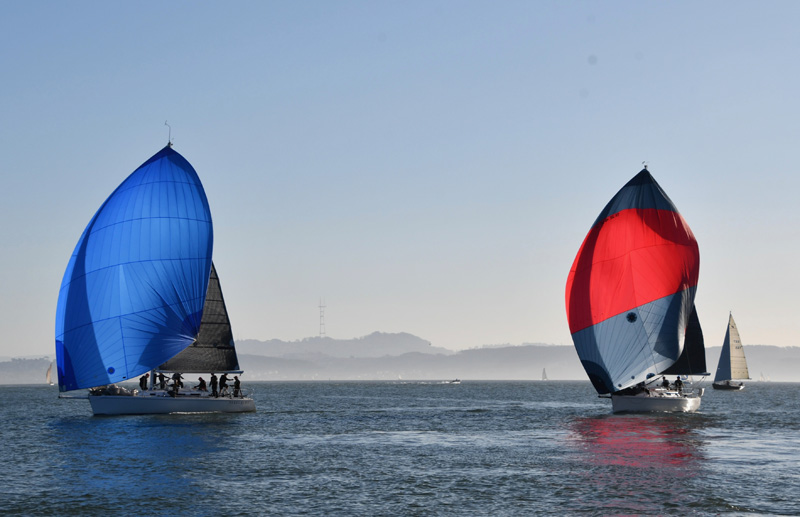
If you’re looking for a more leisurely vibe to your racing, a pursuit race is an ideal option. It reduces the tension at the start by giving each boat its own unique starting time. And, at the end of the race, you don’t have to check the time or wait for results since your place in the fleet is determined by the order of finish. How relaxing is that? OK, it’s still a race, so if finishing well is important, there is an edge that doesn’t exist in a daysail.
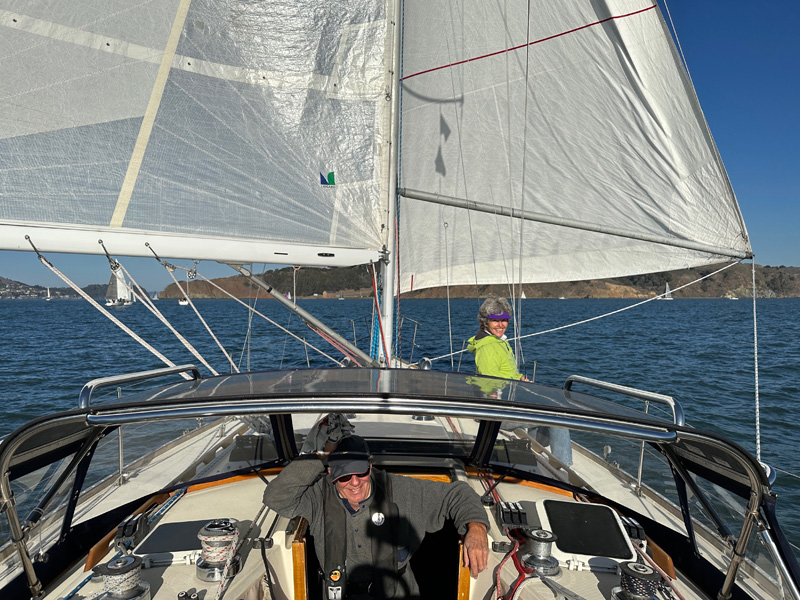
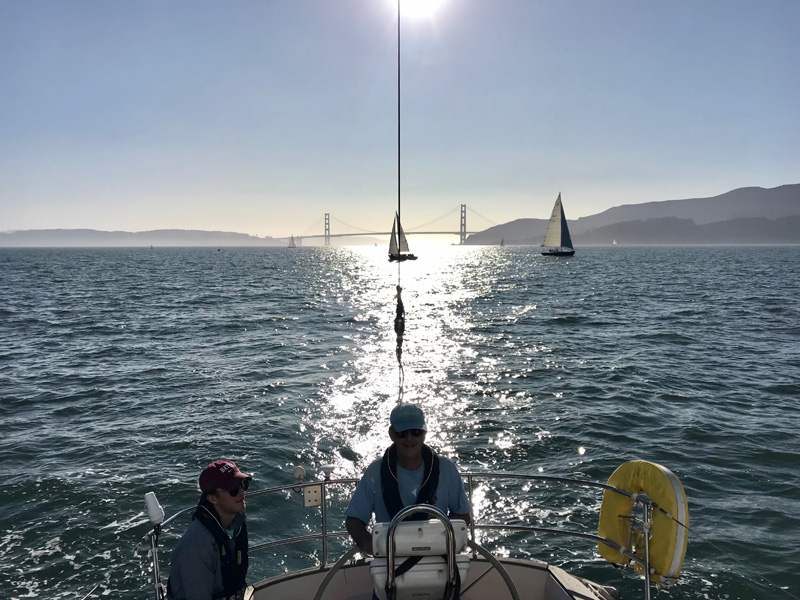
While the above photos could easily be mistaken for a casual Saturday afternoon sail, it was actually a race, so we do feel obligated to share the results. There were three classes with the usual suspects taking their top-of-the-podium positions. Scott Easom took first aboard his J/100 Eight Ball in the nine-boat Spinnaker class, Glenn Isaacson’s Schumacher 40 Q kept her frequent top-of-the-podium position in the six-boat Non-Spinnaker class, and David Schumann’s always-quick SeaCart 30 Bottle Rocket was at the head of the four-boat Multihull class. Complete results here. Coming in first is always the icing on the cake, but the rest of the fleet couldn’t have had a nicer day.
During this gift-giving season, it’s good to remember one of the best gifts you’ve ever received is the ability to sail, and one of the best gifts you can give is to take your friends and family out sailing on the coast and bays of California.
Solo Racer Rescued; Orcas Attack Sir Robin Knox-Johnston
Golden Globe Racer Tapio Lehtinen Rescued in the Southern Indian Ocean
Golden Globe Race entrant Kirsten Neuschäfer reached Tapio Lehtinen’s liferaft on November 19 at 0510 UTC. Lehtinen had taken to the raft when his Gaia 36 Asteria sank the day before at 0700 UTC. Neuschäfer whisked the Finnish GGR veteran from the raft. At the time, Tapio was 460 miles southeast of Port Elizabeth, South Africa. At 0922 UTC, Tapio had activated his emergency YB3 satellite tracking and texting device that’s part of each competitor’s grab bag.
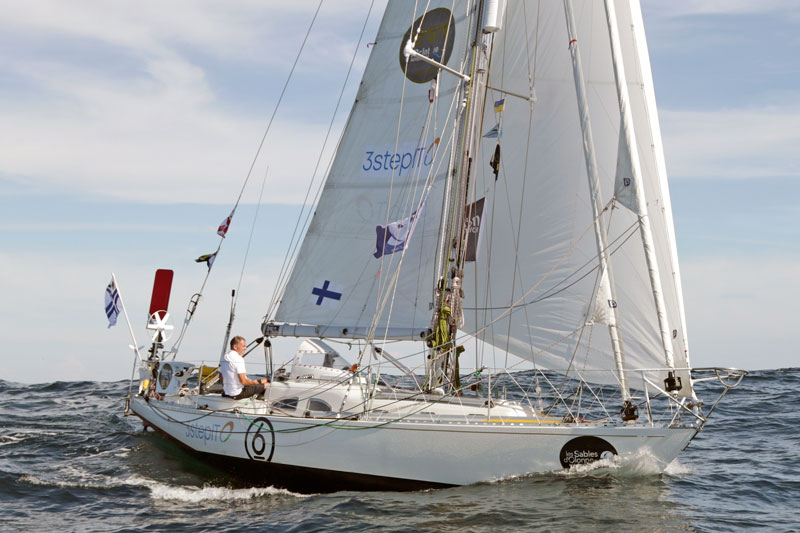
Three boats had diverted to assist Lehtinen after he activated his EPIRB at 0654. He then activated his Liferaft Personal Locator Beacon at 0854 UTC.
MRCC Cape Town communicated with Captain Naveen Kumar Mehrotra on the bulk carrier Darya Gayatri, bound for Singapore, 250 miles northwest of Tapio’s position. The ship diverted course at 12.5 knots to render assistance with an ETA of 0830-1000 UTC on November 19.
Later in the day, Kirsten Neuschäfer aboard Minnehaha, the competitor closest to Tapio at 105 miles, contacted the GGR Crisis Team. In agreement with the Race Office, she broke the seal of her emergency GPS and diverted course toward Tapio’s position. Neuschäfer, a South African, is the only female entry in the race.
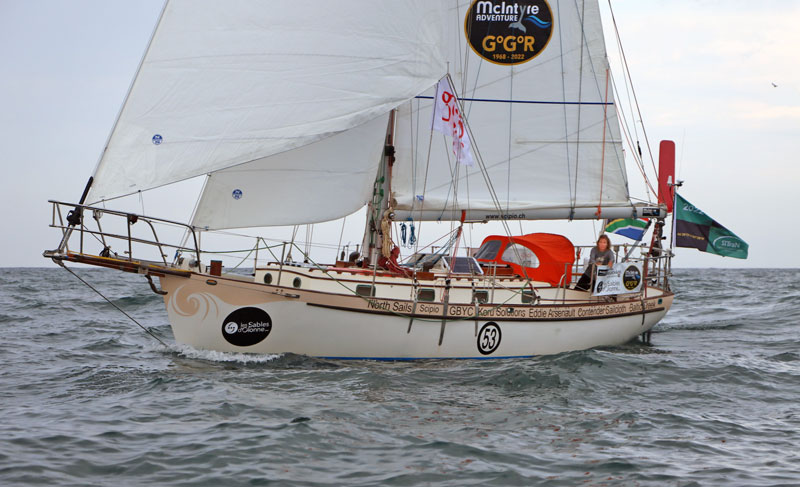
Tapio had an early visual on Kirsten’s yacht, but she could not see the liferaft in the swell. She would hear him on the VHF, but Tapio could not hear her. The crisis management team homed her onto Tapio’s position until they were close enough to see and hear each other.
At 0805 UTC, Kirsten confirmed that she had retrieved Tapio from the liferaft onto Minnehaha with a retrieving line. After sharing a “good glass of rum,” Tapio returned to the raft for the approach to the carrier. He then successfully boarded the ship via a rescue ladder. “It’s quite something to be maneuvering so close to a ship, but we’re all good,” said Neuschäfer. The Darya Gayatri is bound for Rizhao, China, where they will drop off their unexpected passenger.
Lehtinen sent this message from aboard the ship: “The accident was a devastating surprise … After a total rebuild four years ago and being fitted out and inspected again this year, being flooded up to deck level in five minutes and sinking 20 minutes later in beautiful summer conditions is beyond my comprehension.” Read the entire letter here. The boat sank following a “strong unidentified water intake from astern.”
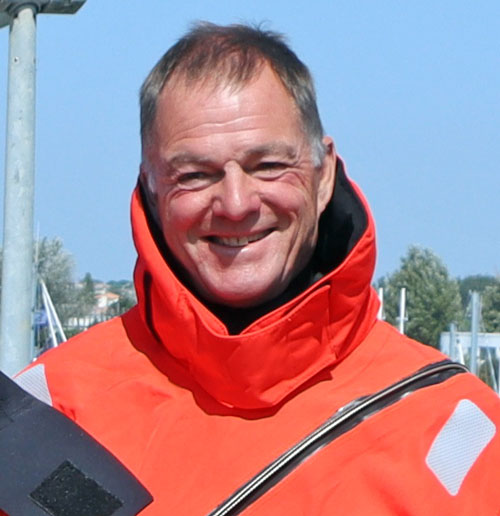
The Golden Globe Race started on on September 4 from Les Sables-d’Olonne, France. It’s supposed to be a solo nonstop circumnavigation à la 1968 Golden Globe, but we’re pretty sure none of the sailors 54 years ago used Twitter. However, you can read the current competitors’ tweets here: https://twitter.com/ggr2022. Nine of the 16 entries remain in the race, including one American, Floridian Elliott Smith.
Orcas Attack Sir Robin Knox-Johnston’s Sailboat
The winner (and only finisher) of the original Golden Globe Race was Englishman Robin Knox-Johnston. On November 24, the 83-year-old was sailing off Spain on his Farr 56 Sanjula, when a pod of as many as 10 orcas surrounded the boat. The whales barged Sanjula’s rudder, eventually breaking a steering connecting rod. Sanjula hove to while the emergency steering was installed, and the orcas moved off. The boat sailed into Vigo, a city on Spain’s northwest coast, for repairs.
Though known as killer whales, orcas don’t normally bother humans and their vessels, but a string of incidents recently in the area have proved the exception. About four weeks ago, off the coast of Portugal, orcas rammed a boat until it sank.
Precision Control From Navtec Hydraulics
Learn more about Navtec Hydraulics here.
Jim DeWitt Memorial Service
Last week we shared the news of celebrated marine painter Jim DeWitt’s passing on Saturday, November 19. In response to sailors who have asked about a memorial service, it is anticipated a service will take place in February. We will share details as they become available.
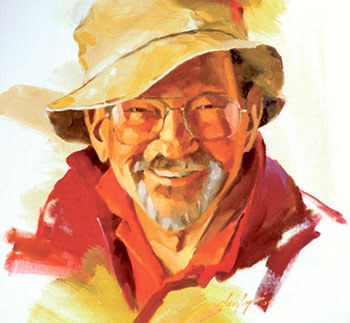
The Red Bra Regatta Turns 10
In November’s Racing Sheet we shared the story of the Red Bra Regatta’s 10-year-anniversary event.
“For our 10th anniversary of the Red Bra Regatta we saw competitive racing from a solid range of boats,” asserts organizer and racer Kim Stuart. “Each year brings an increase in development of skills and gains in confidence. Participation among faster boats has also increased.”
South Beach YC hosts the Red Bra Regatta with action in the southern portion of San Francisco Bay. Boats are crewed and helmed by women only. Racers of all skill levels participate, and many favor being able to mix it up and take on positions outside their normal comfort zones.
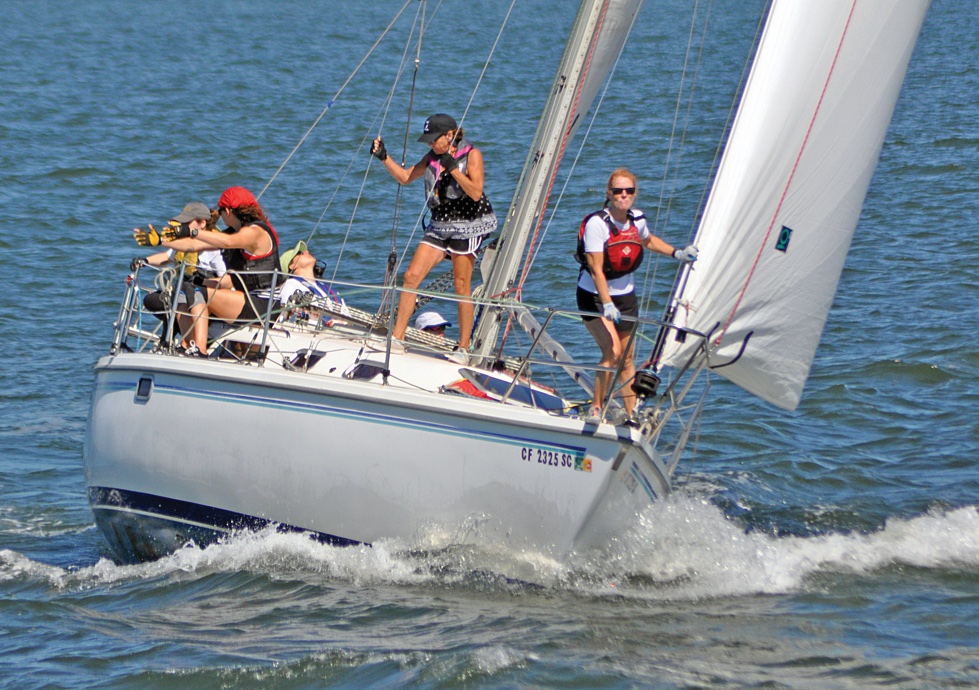
The September 24 event drew 19 crews, each completing two races. In Spinnaker PHRF 99 and above, Robin Van Vliet’s J/24 Little Wing flew to finish first with two bullets. “In Race 1, I realized how hard it was to make the line on starboard tack, so naturally I said, ‘What the heck, port tack at the pin end it is.’ That gave us a great jump ahead. Race 2’s strategy was to not be early due to a ripping ebb, plus not call any laylines until we were close; sailing in South Beach adds quite a layer of complexity.” Van Vliet’s Red Bra crew culled talent from three J/24s plus a Santana 22.
Spinnaker PHRF 98 and below attracted eight to the line. Also earning snake eyes (1,1) was the J/105 Roulette, helmed by Libby Zhang, who reveals that conditions were distinctly different over the day, with winds shifting from an early NNW to a more dominant WNW. A tidal transition also ensued — from flood to ebb. “Early on we saw a westerly wind make its presence in the shape of a big line minus breeze on the course,” says Zhang. “Tactician Katie positioned us mid-line at the edge of pressure to give us an on-time start ahead of other boats, plus an option to immediately tack over onto lifted port.”
Boats that crossed this hole eventually caught a stronger westerly and sailed fast but paid a big price. Roulette led to the windward mark; however, with winds transitioning, the J/105 fought to make forward progress in light and shifty conditions. “Trailing boats came with a new breeze, so all we could do was keep attentive until wind reached us. Once in, we sailed fast to hold a lead.” A 10- to 14-knot WNW and a 1-knot ebb filled for Race 2. It was challenging to make leeward-mark calls with accuracy due to the east-west current differential. As a result, Roulette rounded the mark wide both times. “Our bow and pit team — Sam, Jorly and Stacy — doused the kite admirably in spite of the late calls and hot angles that I threw at them.”
Read the full story of all the races and results at Latitude38.com.
Here Are Some Salty Phrases To Start Your Week — Part 1
We hope everyone had a wonderful Thanksgiving, filled with family, friends, turkey, and afternoon naps. Judging by the masts we saw heading out through the channel, a number of you were able to cast off the docklines and enjoy yourselves on the water. But alas, the weekend is over, and for those of us with regular jobs, it’s back to work today. To help keep that long-weekend sailing vibe alive just a little longer, we’re sharing a list of Salty Phrases that Latitude editor John Riise (JR) put together a while back, just for fun. The list is long and interesting, but in the spirit of keeping things brief, (and because we don’t want to be too distracted from what we are “meant” to be doing) we’re going to share just a few today.
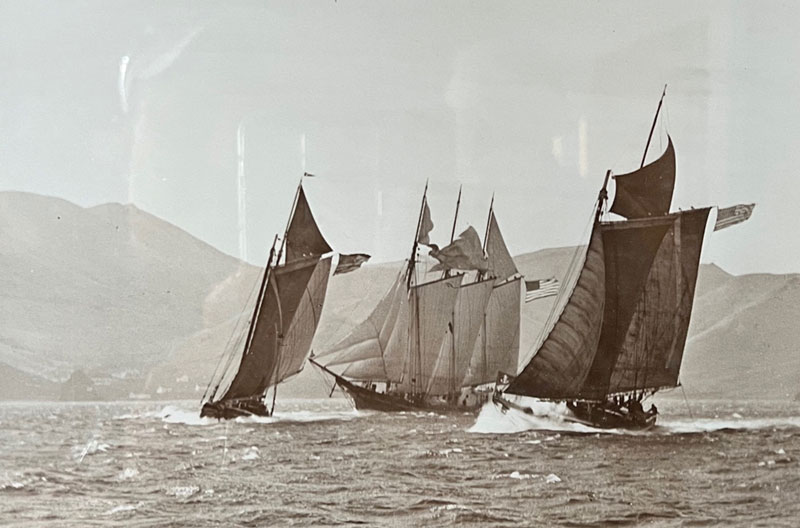
JR wrote: Most sailors are familiar with the main seagoing words that have made their ways into everyday jargon. But you might be surprised at how many familiar phrases also came down the gangplank. Here are a few — and pay attention to how many are related to flags. In the days before radio, flags were the main way ships communicated with each other and the shore.
(In the spirit of full disclosure, we can’t guarantee that all these are 100% accurate. If any need corrections or clarifications, please let us know.)
Above Board: The term today means someone who is honest and forthright. In the old days it just meant visible. The phrase apparently came from a practice by pirates, masquerading as merchantmen, to hide most of their crew behind the bulwarks (“below board?”) until the ship was within striking distance. By contrast, the crew of a genuine — or honest — merchant ship would be visible “above board.”
As the Crow Flies: In everyday language, “as the crow flies” means the shortest distance between two points. In the old days, it gave you a bearing to land. Coastal ships in Europe — perhaps back as far as the Viking days — often carried one or more caged crows. When it was foggy and/or they were unsure of their position, they would let a crow loose, knowing it would fly straight for the nearest land. The practice of carrying the birds in a cage suspended aloft is also where we get “crow’s nest.”
Bamboozle: To get the better of someone through trickery. Said to originate in the 17th century to describe the Spanish custom of raising false flags to deceive — or bamboozle — enemies.
Batten Down, or Batten, the Hatches: Make preparations, particularly for some kind of looming disaster. Aboard cargo ships, battens were long lengths of wood. When a storm was coming, heavy tarps were thrown over cargo hatch covers, and the battens were wedged along the outside edges to ensure the hatches would not leak.
Turn a Blind Eye: Today, if you turn a blind eye, you intentionally ignore something. In 1801, during the Battle of Copenhagen, then Vice-Admiral Horatio Nelson deliberately put his telescope to his blind eye in order not to see the flag signal from his commander to disengage. And, being Nelson, he emerged victorious. What a guy!
By and Large: In the old days, sailing “by” the wind meant sailing as close as possible to the wind (which in those days wasn’t very close). Sailing “large” meant running or broad reaching. So aboard a ship “by and large” meant “in most circumstances.” The meaning ashore has changed a bit to mean, “in general.”
Let the Cat out of the Bag: This common phrase, meaning to reveal a secret, had more dire meanings aboard ship. The “cat” was the cat o’ nine tails — a whip with nine ends used to punish recalcitrant sailors. One can easily imagine that a warning to a misbehaving sailor about letting the cat out of the bag would make him shape up pretty fast.
Cup of Joe: In 1913, Woodrow Wilson appointed Joseph Daniels to be the new Secretary of the Navy. Among Daniels’ reforms was abolishing alcohol consumption aboard warships (then limited to wine in the officers’ mess). From then on, the strongest drink aboard a Navy ship was coffee, and it wasn’t long before it got nicknamed “a cup of Joe.” (Does Starbucks know this?)
Devil to Pay: The “devil” was a nickname given to the seam where the covering board met the deck planking. It was so named because it was both the longest seam on the ship, and the most difficult one to get at for periodic caulking. “Pay” was a type of tar used in caulking. So “the devil to pay” literally meant “that long, difficult seam that has to be caulked.” Landsmen mistook “devil” to be literal, and adopted the phrase to mean some unpleasant result from something someone does — as though Satan is exacting retribution. (This is also where we get the phrase “between the devil and the deep blue sea.”)
We’ll share more of JR’s Salty Phrases in the future. In the meantime, feel free to share your favorites or alternate versions in the comments below.
Latitude 38’s Online Bookstore Is Open
From fiction to nonfiction, classics to underground favorites, history and how-to’s, navigating and maintenance, racing and cruising, triumph, tragedy and the joys of cruising, there is something for every sailor and every season at the Latitude 38 Online Bookstore.


